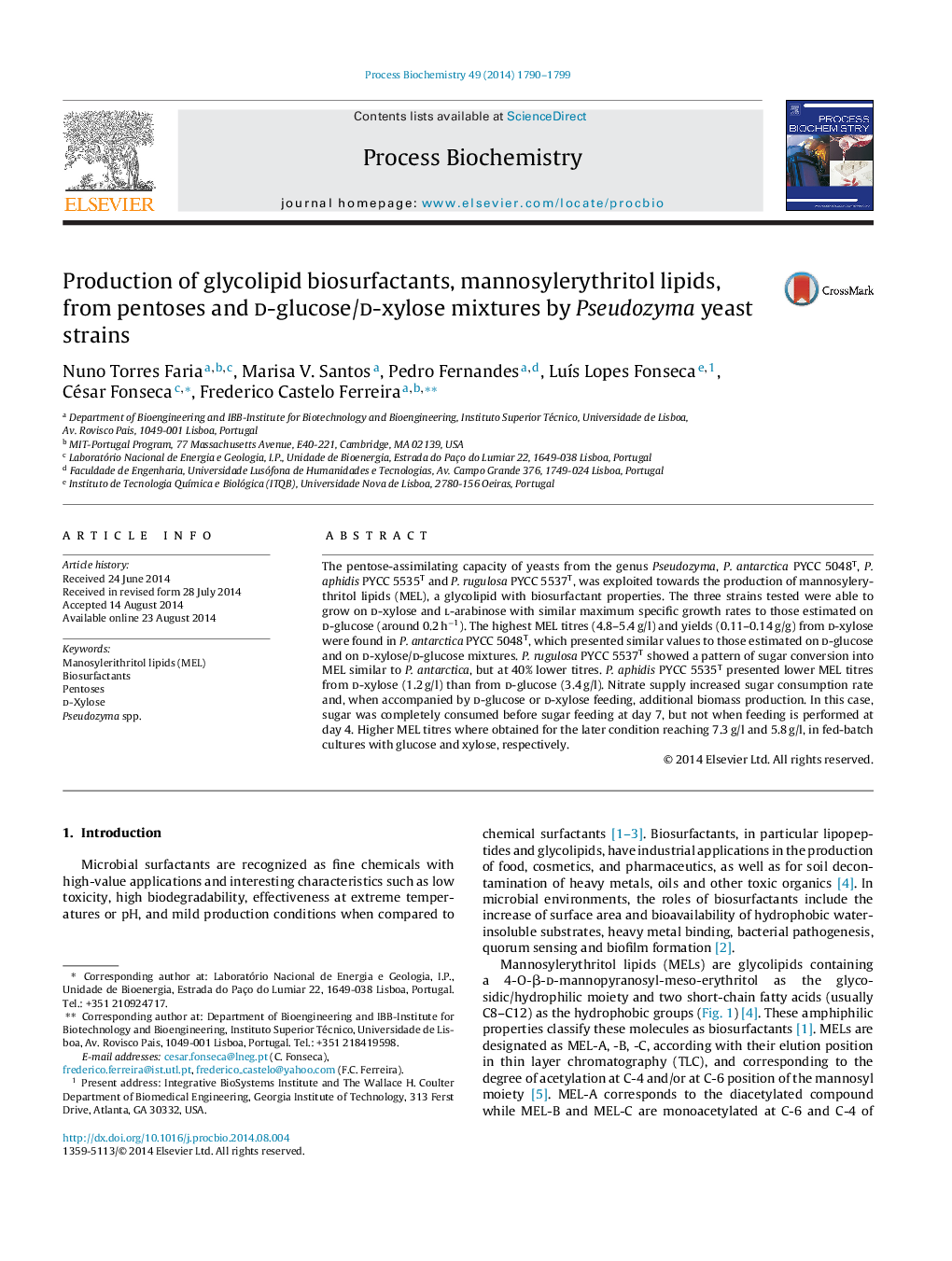| Article ID | Journal | Published Year | Pages | File Type |
|---|---|---|---|---|
| 34435 | Process Biochemistry | 2014 | 10 Pages |
•First report on mannosylerythritol lipids production from pentoses.•Pseudozyma antarctica produced the highest MEL yields from pentoses.•Similar MEL yields obtained from d-xylose or d-glucose in P. antarctica cultures.•Low nitrate levels promoted MEL production, but led to lower sugar consumption rate.•Pulsed fed-batch, with balanced sugar/nitrate levels, led to the highest MEL titres.
The pentose-assimilating capacity of yeasts from the genus Pseudozyma, P. antarctica PYCC 5048T, P. aphidis PYCC 5535T and P. rugulosa PYCC 5537T, was exploited towards the production of mannosylerythritol lipids (MEL), a glycolipid with biosurfactant properties. The three strains tested were able to grow on d-xylose and l-arabinose with similar maximum specific growth rates to those estimated on d-glucose (around 0.2 h−1). The highest MEL titres (4.8–5.4 g/l) and yields (0.11–0.14 g/g) from d-xylose were found in P. antarctica PYCC 5048T, which presented similar values to those estimated on d-glucose and on d-xylose/d-glucose mixtures. P. rugulosa PYCC 5537T showed a pattern of sugar conversion into MEL similar to P. antarctica, but at 40% lower titres. P. aphidis PYCC 5535T presented lower MEL titres from d-xylose (1.2 g/l) than from d-glucose (3.4 g/l). Nitrate supply increased sugar consumption rate and, when accompanied by d-glucose or d-xylose feeding, additional biomass production. In this case, sugar was completely consumed before sugar feeding at day 7, but not when feeding is performed at day 4. Higher MEL titres where obtained for the later condition reaching 7.3 g/l and 5.8 g/l, in fed-batch cultures with glucose and xylose, respectively.
